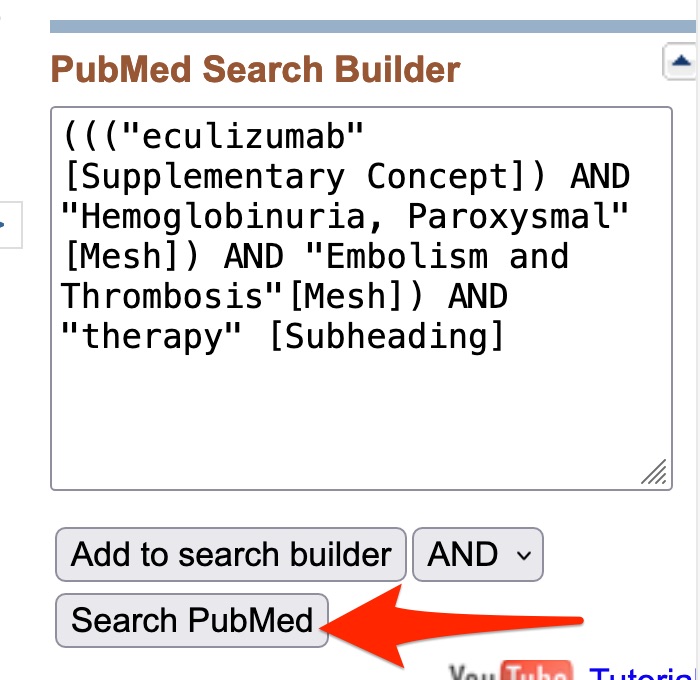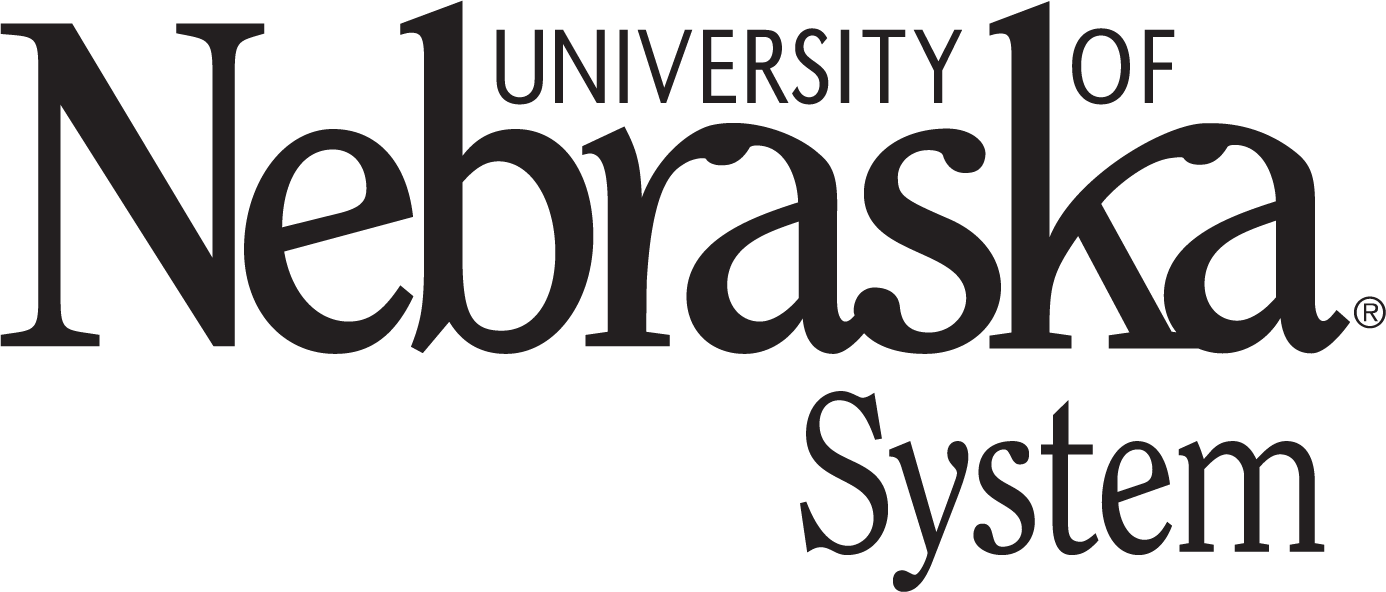Objective 2. Steps in a MeSH: Adding Non-Drug Headings
_______________________________________________________________________
Step 4 (cont). Look up MeSH for the Disease (or other non-drug) Concepts
____________________________
MeSH Database Search
- Look at your “PubMed search builder” box to be sure the formatted MeSH or Supplementary Concept for the drug concept is present. If so, it’s time to proceed to the disease/non-drug concepts in your search.
- Type paroxysmal nocturnal hemoglobinuria into the MeSH search box.

- Click the “Search” button or hit the “Enter” key on the keyboard.
____________________________
Select the best heading
Did your MeSH database search retrieve a single heading or supplementary concept, or, alternatively, did it retrieve a list of headings and supplementary concepts?
- If you see a list of headings and/or supplementary concepts rather than a single heading/supplementary concept, click on the most appropriate term (if any) in the list.
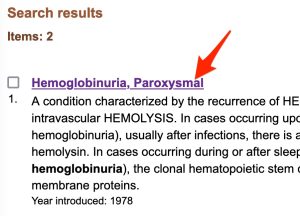
- Once you are viewing the detailed entry for a single heading or supplementary concept,
-
- Read the definition that appears immediately below the heading or concept. Sometimes the definition contains alternate headings (in all CAPS) that are more appropriate for a search. Does a more appropriate heading appear in all CAPS in the definition for your MeSH or Supplementary Concept? If so, search the MeSH database for that term.

-
- Scroll down the page past the bulleted “entry term” list to look for a “see also” list . If a “see also” list is present below the “Entry term” list, is a more appropriate heading/supplementary concept listed with the “see also” terms? If so, click on the more relevant heading/supplementary concept.
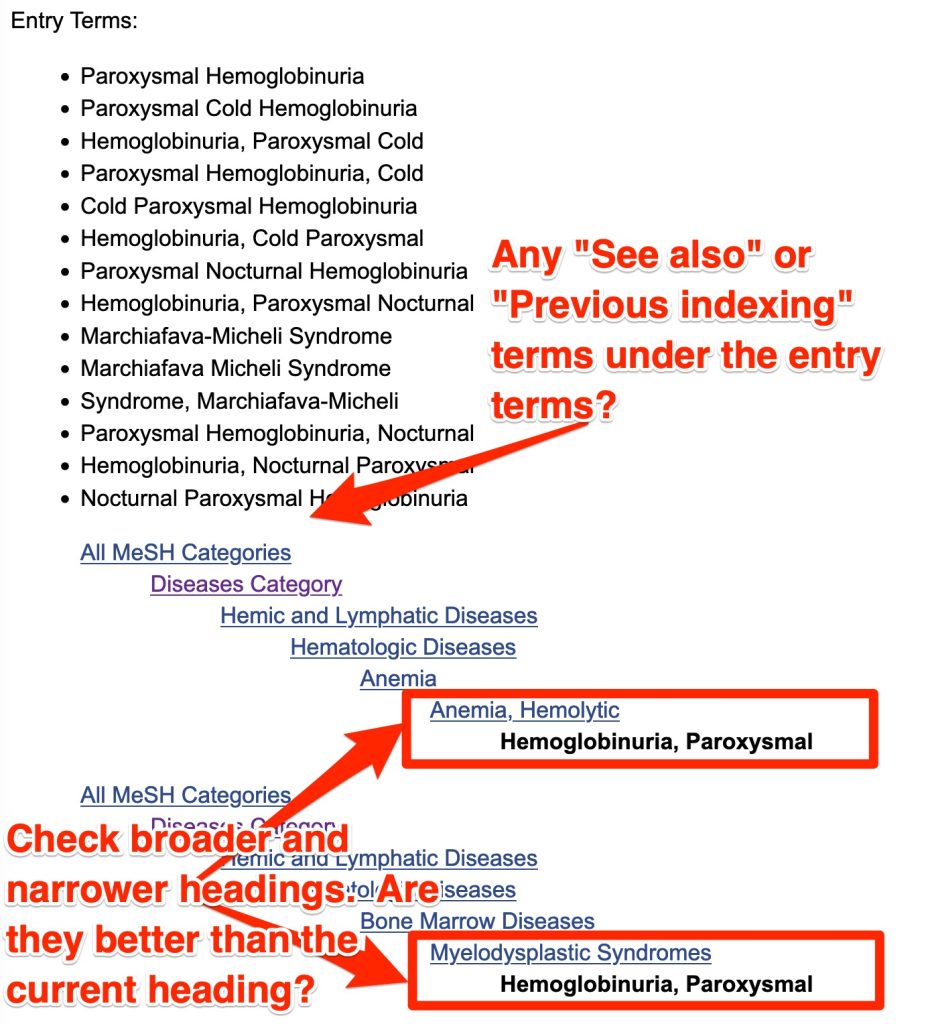
- If you are looking at the entry for a MeSH heading (rather than a supplementary concept), scroll down to see the MeSH tree/hierarchy at the bottom of the page. Do you see a more appropriate heading in the MeSH tree?
“Hemoglobinuria, Paroxysmal” happens to be the narrowest heading in two MeSH trees. When you work on a different search, your heading may appear above narrower headings. Remember, PubMed explodes by default. This means that, unless you check the “Do not include MeSH terms found below this term in the MeSH hierarchy” box, Pubmed will retrieve any records indexed with your selected heading, and also any records retrieved with the narrower headings. Usually this default explosion is desired, but, rarely, you’ll want to exclude the narrower terms from your search.
- If you see a more appropriate heading, click on that term.
(In this case, the “Hemoglobinuria, Paroxysmal” is the best heading choice.)
____________________________
If desired, select a subheading
Do you want a subheading?
- Scroll back up to the list of subheadings available for “Hemoglobinuria, Paroxysmal”.
(When you work on your group projects, you may add subheadings to your disease headings. Remember: “Therapy” is a broad subheading that, in the PubMed search interface, will retrieve records indexed with the narrower subheadings: “therapy”, “diet therapy”, “drug therapy”, “nursing”, “prevention and control”, “radiotherapy”, “rehabilitation”, “surgery”, and “transplantation”. It’s important to include the broader “therapy” subheading if you want to find articles that touch on multi-modal therapy, e.g. drug therapy plus nursing care. )
____________________________
Add the desired heading or heading/subheading combination to the “PubMed Search Builder”
- After selecting the appropriate subheading/s (if any), scroll up to the PubMed Search Builder.
- Do you want to join this concept to the concept already present in the search builder with OR, AND, or NOT? Make the appropriate selection.
- Click on the “Add to Search Builder” button.
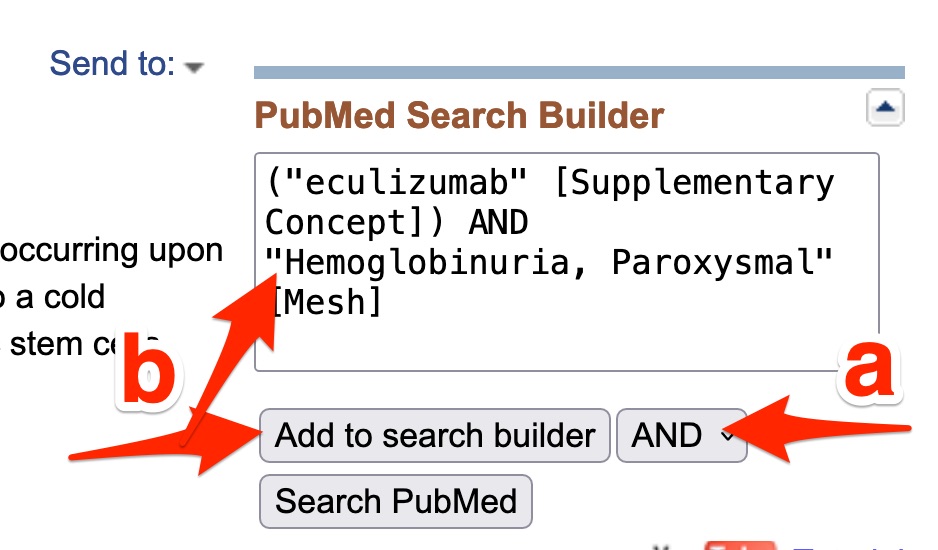
____________________________
Make a note of the “Year Introduced”
Before moving on to the next search concept, make a note of the year when this heading was first used (the “Year Introduced”)
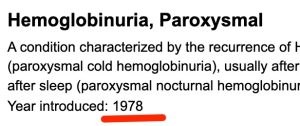
____________________________
Repeat the steps above for your other search concepts (e.g. the heading for the “Thrombosis” concept and the “therapy” subheading).
- Repeat the steps above for the thrombosis and therapy search concepts. Remember when searching for “thrombosis”, you’re looking for a heading and, when searching for “therapy”, you’re looking for a subheading.
Before moving to the next stepp (running the search in PubMed), consider the questions below:
Did you end up with either the search strategy shown below or a search containing the same terms in a different order? If so, great job!
(((“eculizumab” [Supplementary Concept]) AND “Hemoglobinuria, Paroxysmal”[Mesh]) AND “Embolism and Thrombosis”[Mesh]) AND “therapy” [Subheading]
Some of you may have used the “Thrombosis”[mesh] heading rather than switching to the broader “Embolism and Thrombosis”[mesh] heading when you reviewed the “Thrombosis” heading tree. The “Thrombosis” heading is a reasonable choice. I chose the broader heading because, after years of searching experience, I’ve learned that a disease that can cause thrombosis can almost always cause embolism as well.
Have you made a note of the “Year introduced” for the additional heading/subheadings? If so you should have a list of the introduction dates for each of the headings and floating subheadings included in your search. The list for the tutorial search is shown below:
eculizumab [Supplementary Concept] Febrary 18, 2004
Hemoglobinuria, Paroxysmal 1978
Embolism and Thrombosis 1998
therapy [Subheading] 1966
What is the oldest publication you can trust this search to retrieve?
All of the headings you’re using are AND’d. Since all must be present in every record retrieved, the most recently introduced heading will limit what you can retrieve. What is the most recent of your heading and/or subheading introduction dates? For the tutorial search this date is February 18, 2004. You can’t trust the MeSH search to retrieve items added to PubMed before February 18, 2004.
Notes unrelated to the tutorial search:
Headings/subheadings without introduction dates were already part of the MeSH vocabulary when MEDLINE was created.
Most headings are first introduced in the latter part of the year (October -December). Let’s pretend that you are using this tutorial to guide your group project work and the introduction dates for your headings suggest that your search would cover literature back to 2000 and no specific month and date is given with the 2000 introduction date. In this case, you should assume that your search would cover items added to MEDLINE from approximately October -December 2000 to the present.
_______________________________________________________________________
Step 5. Check the Boolean operators (AND, OR, NOT) and parentheses in the PubMed Search Builder
- Since all the headings and floating subheadings in this search are AND’d, you don’t have to worry about the positions of parentheses.
Are you using this tutorial to guide your group project search? If so, does your search include more than one heading for a single concept? If so, check the “PubMed Search Builder” to be sure that the concepts for that single concept are OR’d together and enclosed in a set of parentheses. Check also to be sure that there are no un-paired parentheses inside the set of parentheses that define a concept.
_______________________________________________________________________
Step 6. Run the Search
- When you’re satisfied with your search statement, click the “Search PubMed” button.
